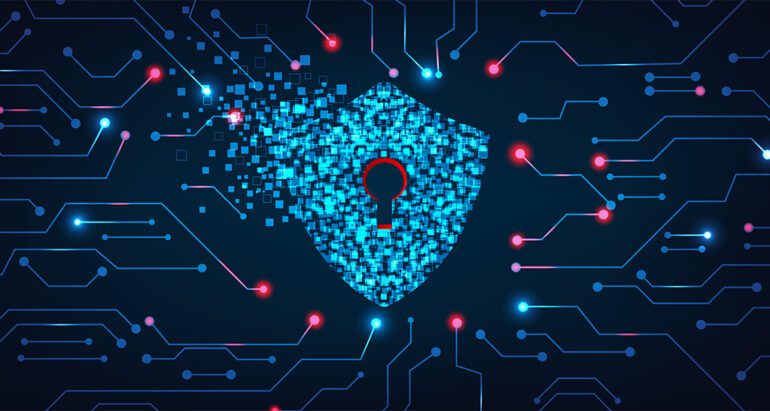TL;DR:
- Artificial Intelligence (AI) offers a groundbreaking solution to strengthen smart grid cybersecurity.
- AI applications include proactive vulnerability management and pattern analysis for detecting and addressing potential threats.
- Modern biometric authentication methods enhance login security by leveraging AI algorithms.
- AI-driven behavioral analysis enables the detection of anomalies caused by malware.
- AI-powered systems excel at detecting and preventing phishing attacks, recognizing fraudulent websites, and analyzing phishing patterns.
- A combined approach of traditional and AI-based threat detection ensures optimal results, minimizing false positives.
Main AI News:
As the realm of cybersecurity battles against a relentless surge of ever-evolving threats, traditional security solutions find themselves on shaky ground. Conventional methods of malware detection, such as signature-based detection, no longer possess the prowess to combat novel cyber attacks. Cybercriminals persistently concoct ingenious tactics to elude security programs and infiltrate networks with a myriad of malicious software.
Enter Artificial Intelligence (AI), the game-changing force that promises to rescue us from this perilous predicament. Researchers and security program manufacturers are harnessing the potential of AI to develop cutting-edge solutions capable of detecting and neutralizing sophisticated cyber threats, effectively curbing data breaches. Across various domains, AI has demonstrated its transformative impact, and now, it stands poised to revolutionize cybersecurity.
Within the realm of smart grids, where information and communication technologies (ICT) reign supreme in managing and controlling electricity generation, transmission, and distribution, the need for robust cybersecurity measures becomes paramount. The reliance on ICT has inadvertently rendered smart grids susceptible to devastating cyberattacks, which can disrupt the power supply, inflict financial losses, and even compromise critical infrastructure. To fortify the security of smart grids, AI can be leveraged to deliver advanced threat detection, rapid response, and effective mitigation capabilities.
Let us now explore some key applications of AI in the realm of cybersecurity, each designed to bolster our defenses and preserve the integrity of our digital domains.
Vulnerability Management: An Ounce of Prevention In the realm of traditional security solutions, vulnerabilities are identified within IT infrastructures, prompting subsequent action based on their nature. However, AI and Machine Learning (ML)-enabled tools to adopt a proactive approach, swiftly detecting potential vulnerabilities by analyzing patterns and uncovering latent weaknesses. By discerning the patterns employed by attackers, infiltrating methods can be exposed, facilitating the timely fortification of networks and systems against impending threats.
Enhanced Authentication: Forging a Secure Path Forward While many organizations and individuals still rely on traditional authentication methods, such as login credentials, the inherent weaknesses of these approaches cannot be ignored. All too often, users adopt lax security practices, opting for easily guessable passwords and employing the same credentials across multiple accounts. Such laxity exposes organizations and individuals to significant security risks.
However, with the advent of modern biometric authentication methods like facial and iris recognition, the authentication landscape has been transformed into a realm of robust security and unparalleled convenience. AI algorithms powering biometrics ensure impervious defenses against cybercriminals seeking to breach our digital fortresses.
Behavioral Analysis: Unveiling the Anomalies One of AI’s most remarkable contributions to cybersecurity lies in its capacity for behavioral analysis. By observing users’ work patterns, AI can establish behavioral norms, enabling swift detection of any deviation caused by the introduction of malware. Changes in internet usage patterns, typing speeds, or background activities are promptly flagged as anomalies, providing an early warning system that promptly alerts authorities. This capability empowers cybersecurity teams to stay one step ahead of threats, bolstering their ability to safeguard critical systems.
Phishing Prevention: Unmasking Fraudulent Phishing remains one of the most prevalent cyberattacks, serving as a favored weapon for hackers seeking to acquire login credentials or introduce malware into systems. Here, AI proves invaluable, capable of detecting and thwarting phishing attacks with remarkable accuracy. AI-powered systems adeptly discern the most common phishing sources, arming organizations with insights to fortify their defenses. Distinguishing between genuine and fraudulent websites becomes effortless for AI algorithms, empowering users to navigate the treacherous digital landscape with confidence. Furthermore, AI’s ability to analyze phishing patterns based on specific geographical locations adds an extra layer of protection.
Threat Hunting: Pioneering New Frontiers Traditional security programs heavily rely on signature indicators to detect threats, limiting their effectiveness to previously encountered attacks. However, AI’s prowess shines through when it comes to swiftly identifying emerging threats. Nonetheless, this heightened sensitivity to new threats often results in an increase in false-positive cases. To mitigate this challenge, a combined approach integrating both traditional detection methods and AI-driven behavioral analysis becomes imperative. Such a harmonious collaboration holds the key to minimizing false positives and maximizing threat detection capabilities.
Embracing the Future with AI-Driven Cybersecurity
The convergence of Artificial Intelligence and cybersecurity heralds a new era of resilience in the face of ever-evolving cyber threats. By leveraging AI’s proactive vulnerability management, fortified authentication systems, behavioral analysis, phishing prevention, and innovative threat hunting techniques, businesses and individuals can fortify their digital fortresses against relentless adversaries. As the digital landscape continues to expand, AI stands tall as the guardian of tomorrow’s smart grids, preserving the uninterrupted flow of power and securing the backbone of critical infrastructure. Let us harness the transformative potential of AI and usher in an era of cybersecurity where resilience reigns supreme.
Conclusion:
The integration of Artificial Intelligence into smart grid cybersecurity ushers in a new era of resilience and protection. AI-powered solutions provide advanced threat detection, rapid response, and mitigation capabilities to safeguard critical infrastructure. By leveraging AI’s proactive and adaptive capabilities, businesses can enhance their security posture, fortify their defenses against evolving cyber threats, and ensure the uninterrupted flow of power in the digital age. The market can expect increased demand for AI-driven cybersecurity solutions, as organizations recognize the paramount importance of protecting their smart grid infrastructure.

